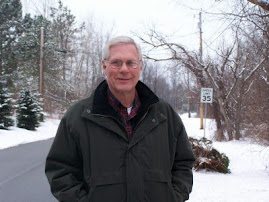President Obama this week failed to get enough support to pass healthcare reform, one component of which was to require almost all Americans to get health insurance, with those less financially capable getting a subsidy to cover part of the insurance cost. This failure was cheered by those who felt being required to have insurance was an intrustion on their rights.
Many of those who rejoiced in Obama's defeat were healthy young and middle aged people who didn't have much money and saw the insurance requirement as a budget problem. Their view was that they'd rather keep their money and take their chances. Now they were able to do that.
What was the outcome of this health reform failure? Well, even though most of these basically healthy people would stay that way, quite a few did not. Some of these younger people were severely injured in auto accidents or incurred serious sports-related injuries. Even more of the middle aged people had these same issues, but some also had heart problems, became diabetic, were diagnosed with cancer, or required a joint replacement. Every one of these unlucky people was very expensive to treat, but they had not purchased health insurance. What became of them?
Thankfully, none of these people were denied health care for serious conditions due to a lack of insurance. These uninsured folks went to emergency rooms, were admitted to the hospital, and got the care they needed. After their meager financial resources were exhausted, they went on public programs that paid for their ongoing medical procedures and medications. Their huge unpaid hospital bills were uncollectable, and they went bankrupt. However, since their assets were small to begin with, their financial losses were not that significant. The losses incurred by hospitals and doctors were much larger.
What happened to the losses that hospitals and doctors incurred for these uninsured patients? These costs just became part of their overhead, and added to the base of costs that they passed on to insurance companies in the form of higher prices. The insurance companies, needing to cover their higher costs, raised rates for all the people they insured. Some doctors took their practices totally private, refusing to accept insurance for payment.
So, Obama's health care reform failed, and things remained pretty much the same as they were before. Uninsured people got treatment for their immediate problems, and many of the poorest ended up on public assistance health care programs. Those who did have insurance saw their rates increase, and they paid higher taxes to offset the costs the government incurred for public assistance health care. In the end, the young and middle aged uninsured who stayed healthy spent their savings on other things, and the uninsured ones who got sick or injured indirectly passed on the cost of their care to those who had purchased insurance.
Many people, understanding this pattern, began to demand that those who do not want to buy health insurance sign an agreement that they will only get care that they can pay for themselves. This concept was incorporated in a new health care reform bill. After that, hospitals opened new wings filled with cots where those whose funds were exhausted died in peace, content that their death was based on principle and remembering all the good things they had purchased with their savings from not having health insurance.
Subscribe to:
Post Comments (Atom)

1 comment:
Post a Comment